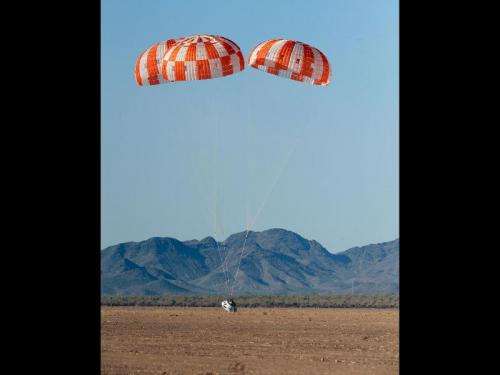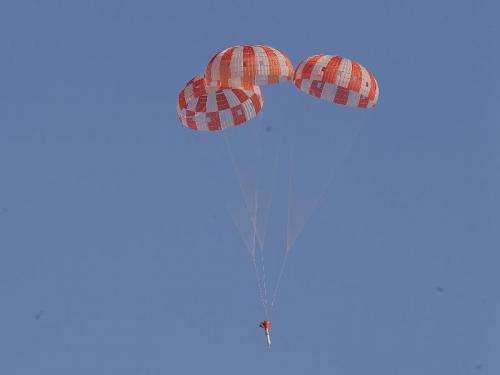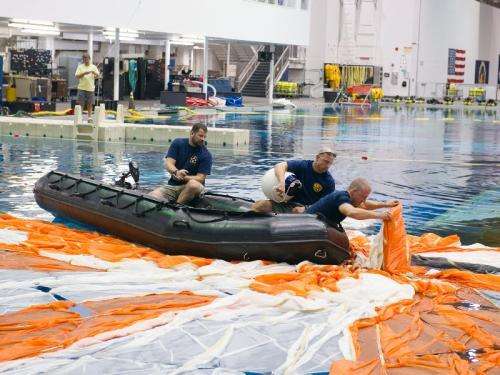NASA completes maximum parachute test for Orion spacecraft

(Phys.org)—NASA Tuesday successfully completed another parachute test of its Orion spacecraft high above the skies of the U.S. Yuma Army Proving Ground in southwestern Arizona. The test examined the maximum pressure Orion's parachutes might face when returning from exploration missions.
Orion will be the most advanced spacecraft ever designed and carry astronauts farther into space than ever before. It will provide emergency abort capability, sustain astronauts during space travel and provide safe re-entry from deep space.
During the test, a C-130 airplane dropped a dart-shaped test vehicle with a simulated Orion parachute compartment from an altitude of 25,000 feet. Orion's drogue chutes were deployed at approximately 20,000 feet, followed by small pilot chutes, which then deployed the three main parachutes. Each of the main parachutes is 116 feet wide and weighs more than 300 pounds.

"Each one of these tests helps us verify the parachute system for Orion is safe, efficient and robust," said Chris Johnson, a NASA project manager for Orion's parachute assembly system. "Today's test demonstrated the parachutes can deploy at the maximum velocity expected when returning from deep space."
This is the latest in a series of parachute drop tests, with each one designed to test a different condition or behavior of the parachutes. Besides the dart-shaped test vehicle used to simulate the speeds at which Orion will descend, NASA also uses a test vehicle that more closely resembles the actual Orion spacecraft.
Orion will fly its first test flight, Exploration Flight Test 1, in 2014. During the test, the spacecraft will travel more than 3,600 miles into space—15 times farther from Earth than the International Space Station—and reach speeds of more than 20,000 mph before returning to Earth. This unmanned test flight will launch from Cape Canaveral Air Force Station in Florida. It is designed to test several Orion systems, including the heat shield and parachutes at speeds generated during a return from deep space.

In 2017, Orion will be launched by NASA's Space Launch System (SLS), a heavy-lift rocket that will provide an entirely new capability for human exploration beyond low Earth orbit. Designed to be flexible for launching spacecraft for crew and cargo missions, SLS will enable new missions of exploration and expand human presence across the solar system.
Provided by NASA


















